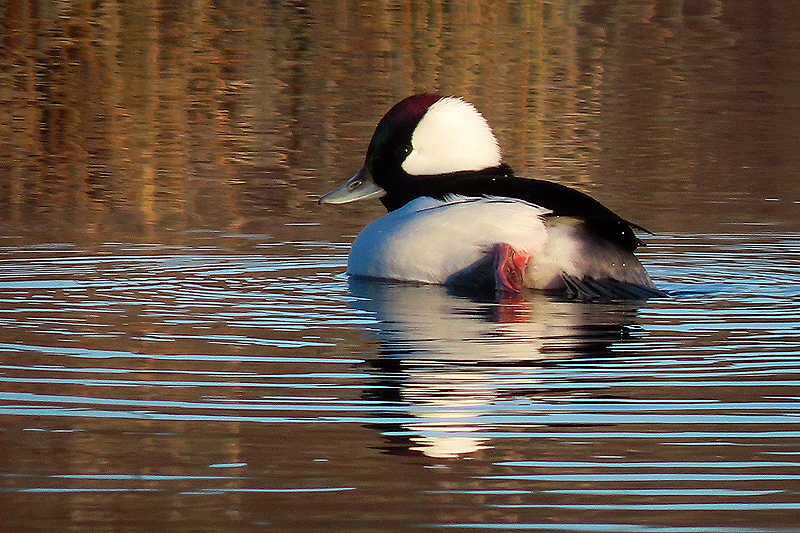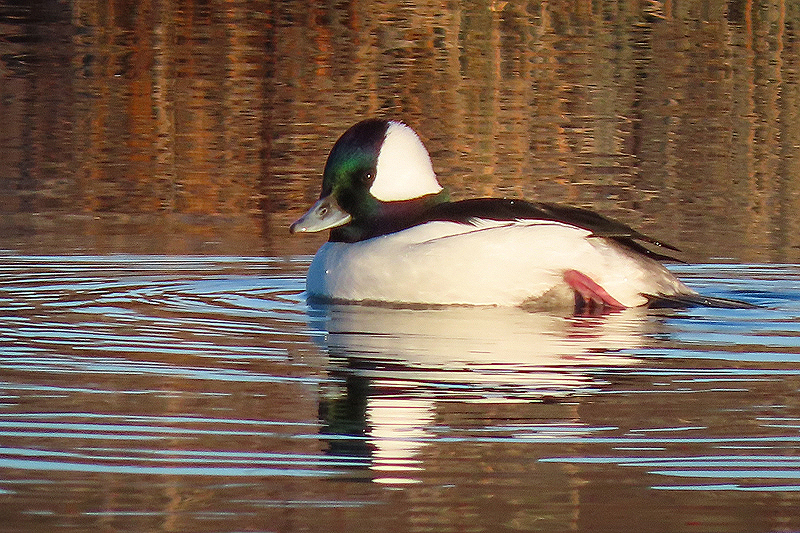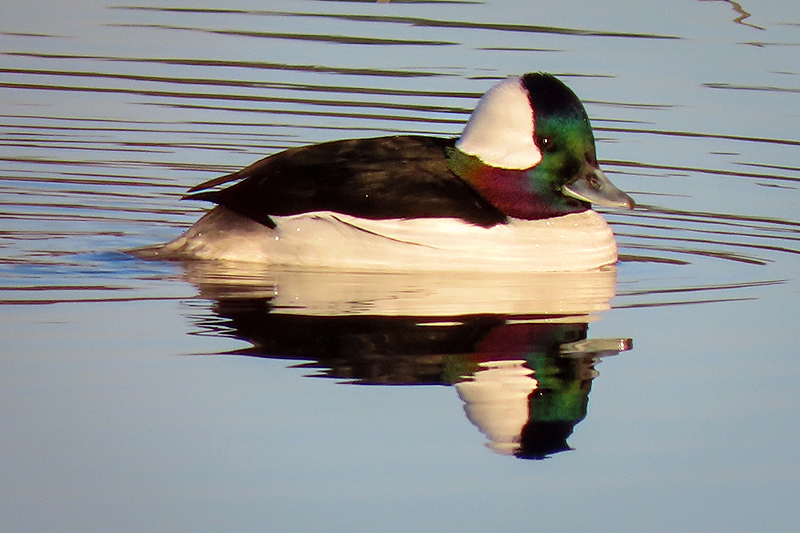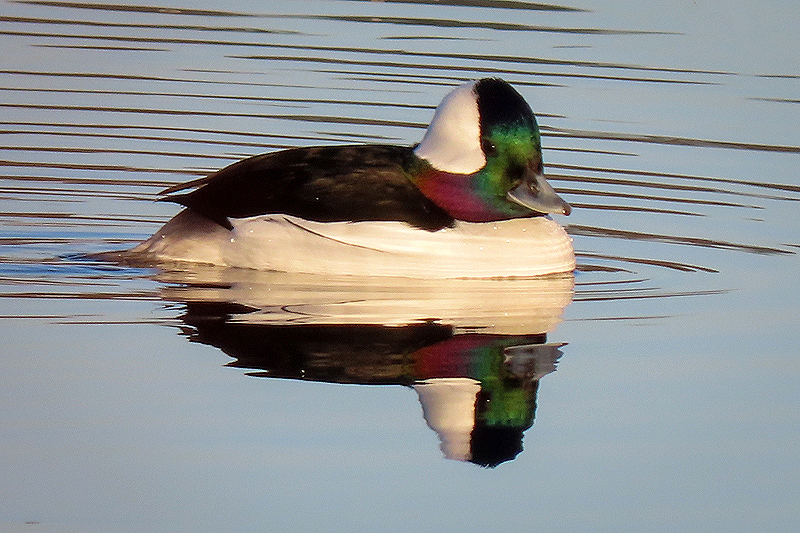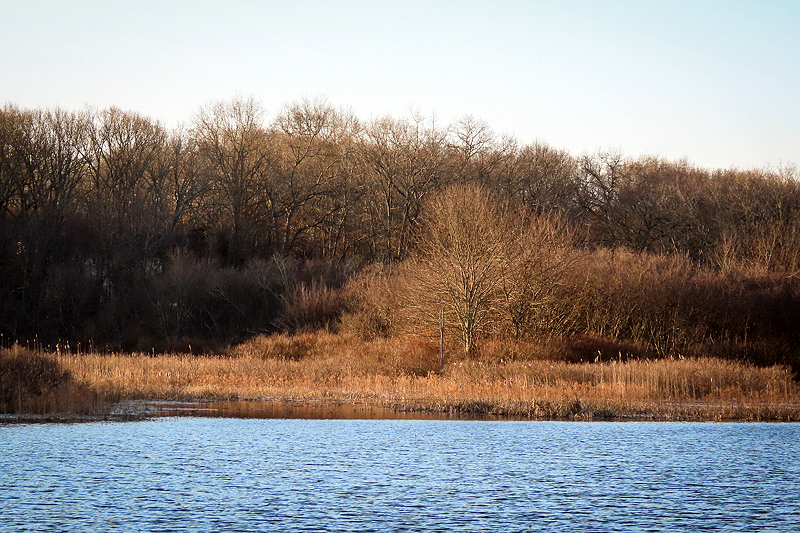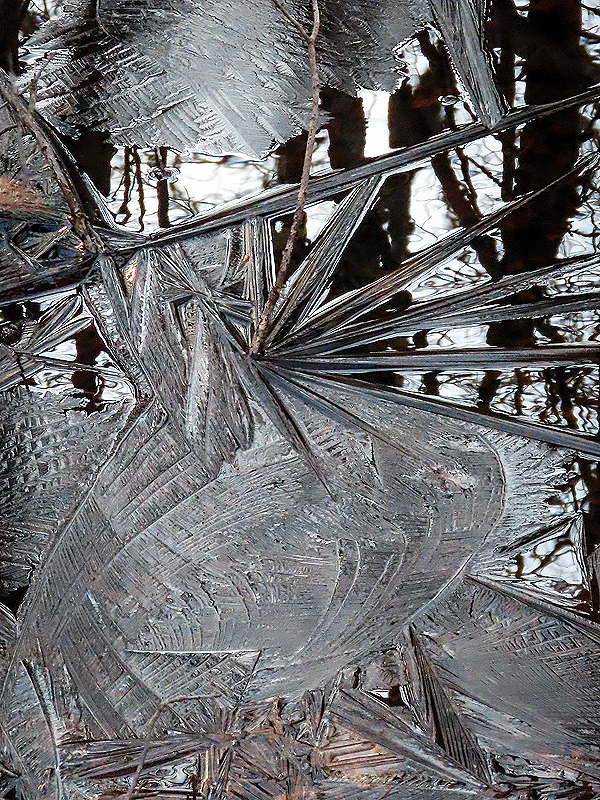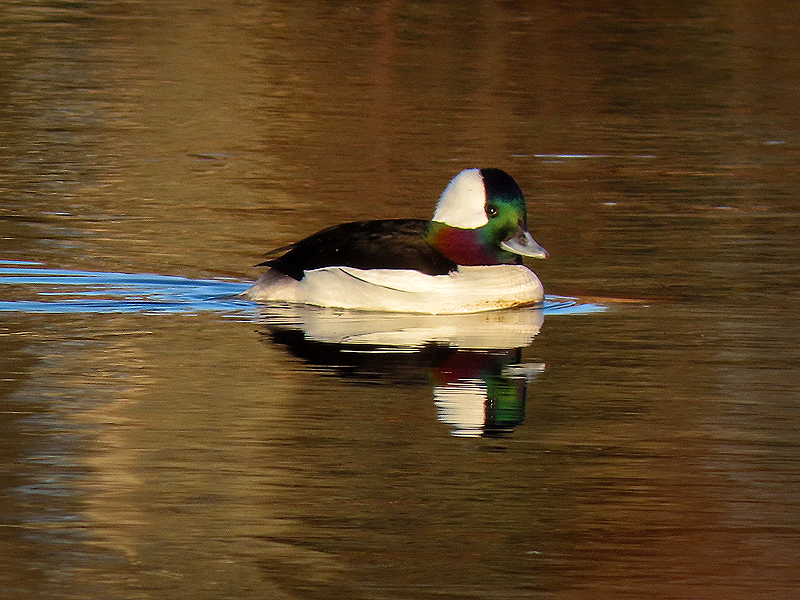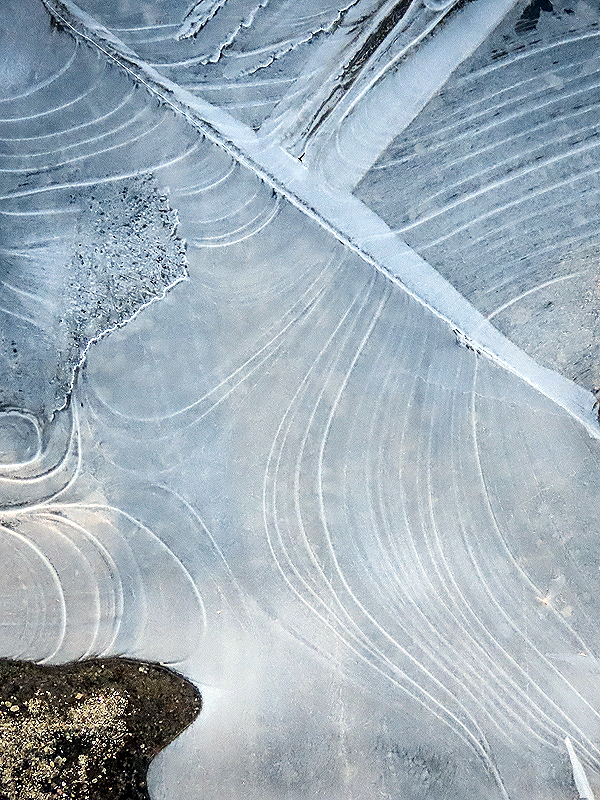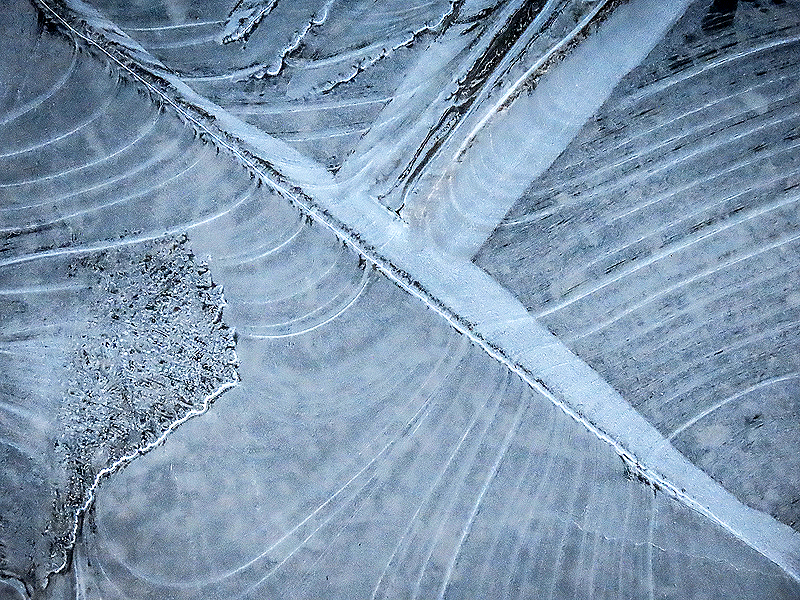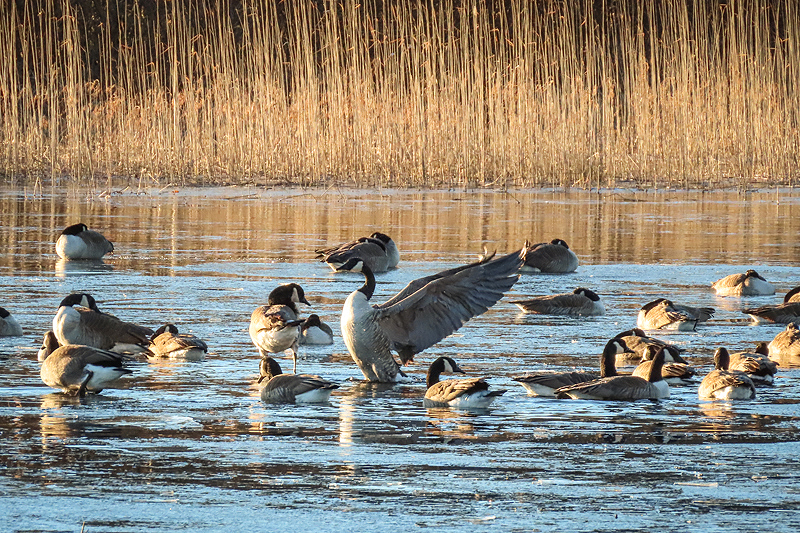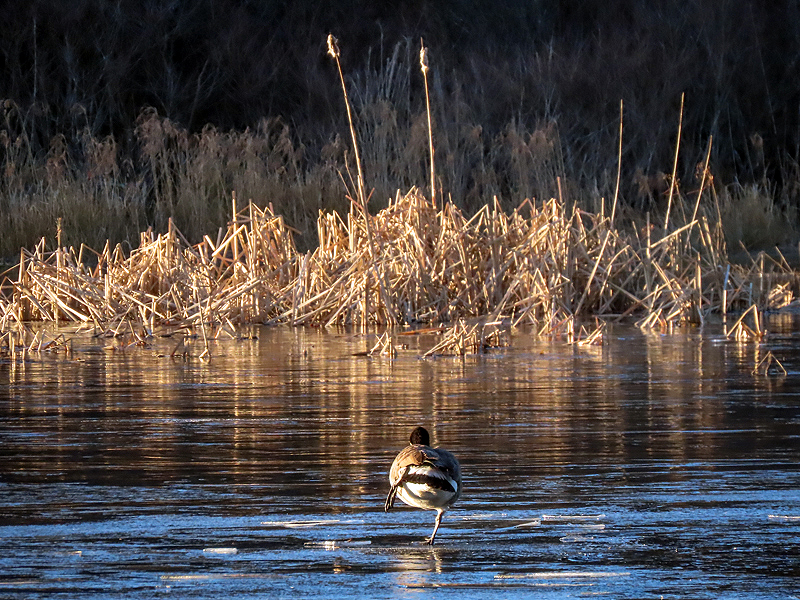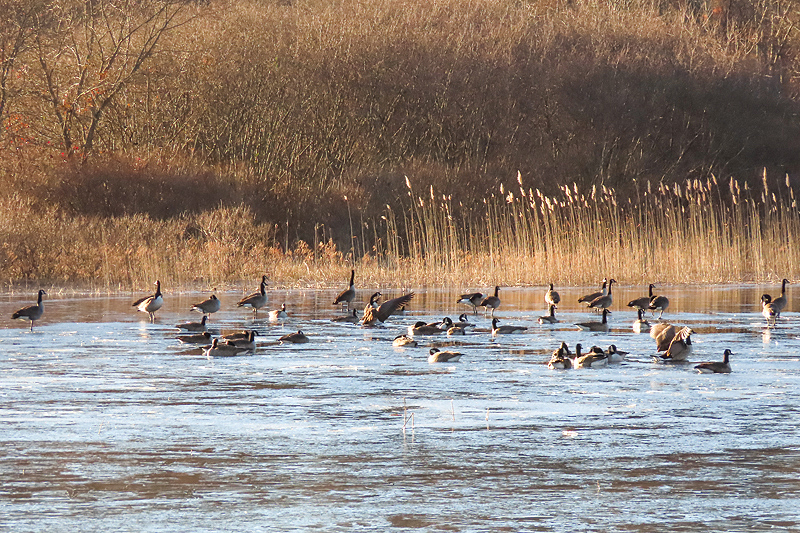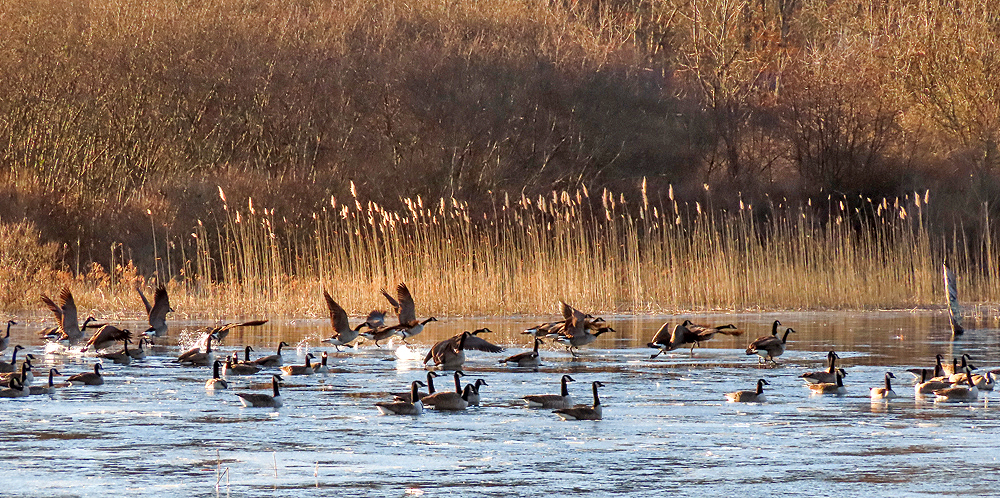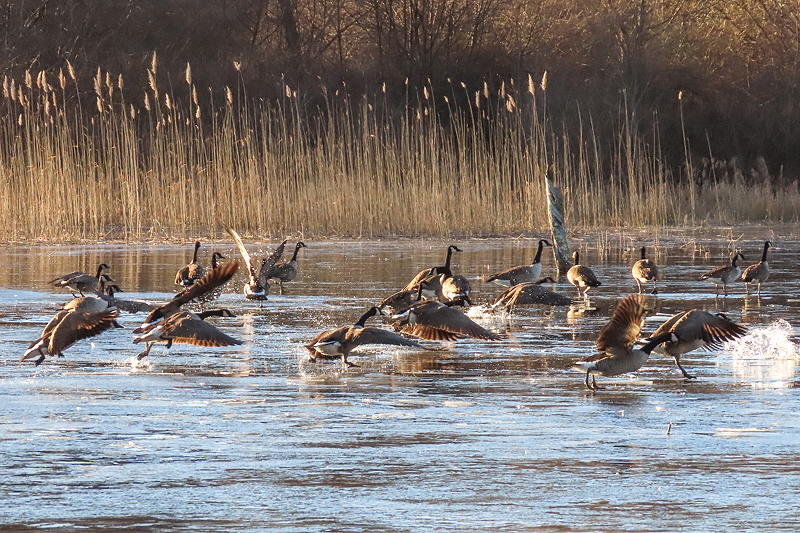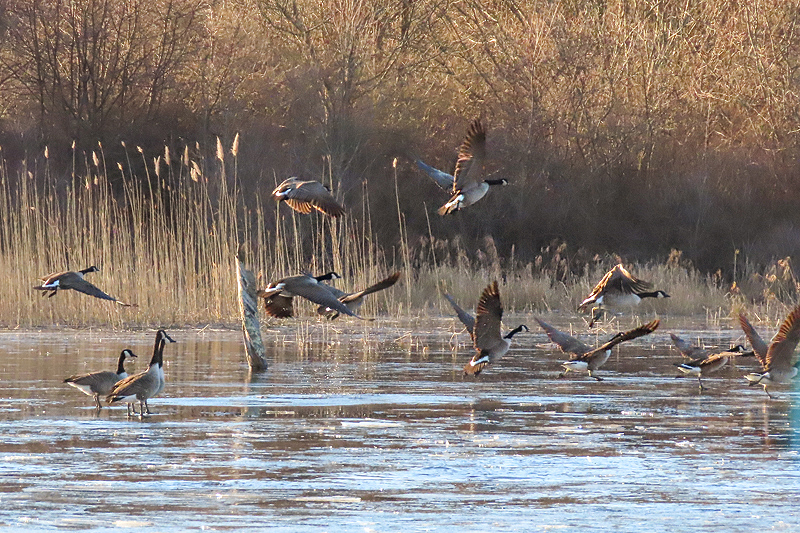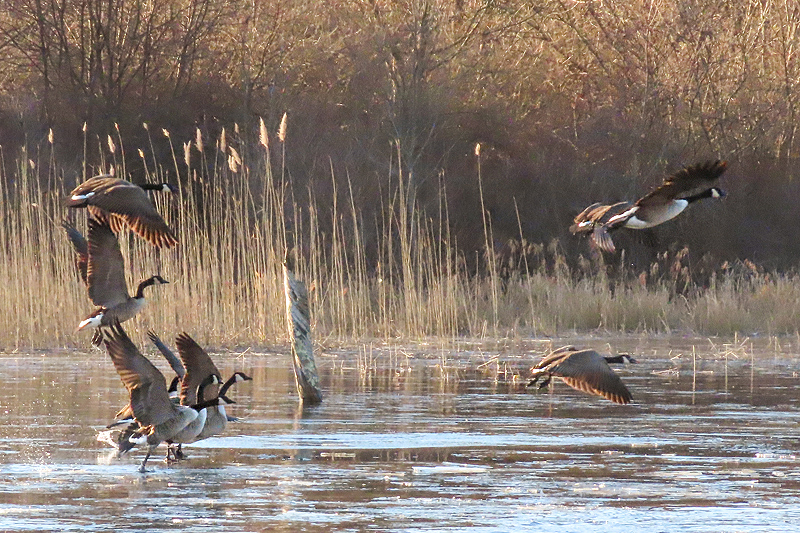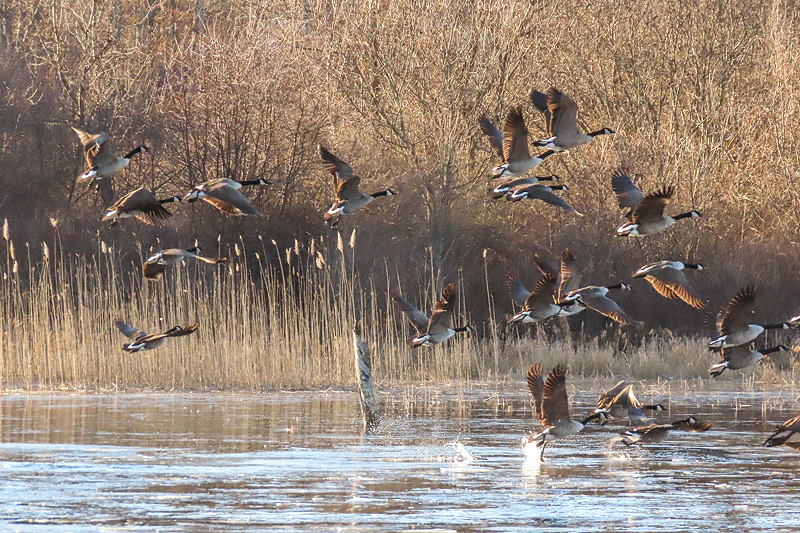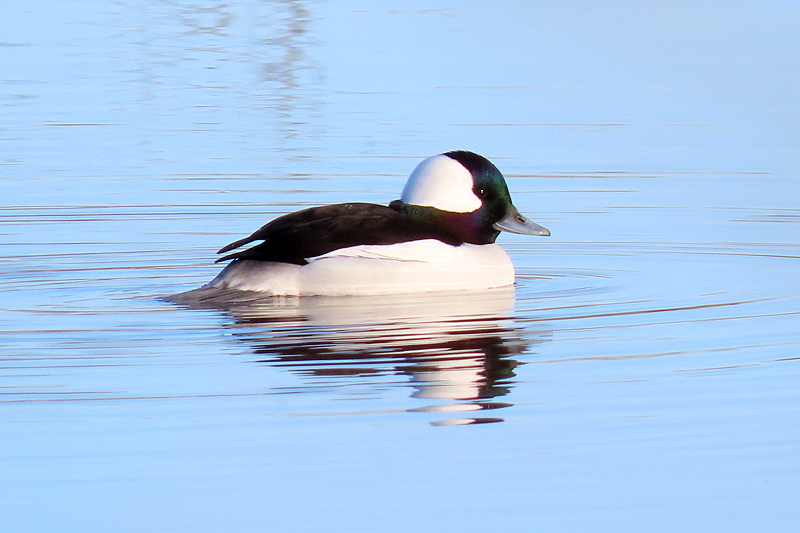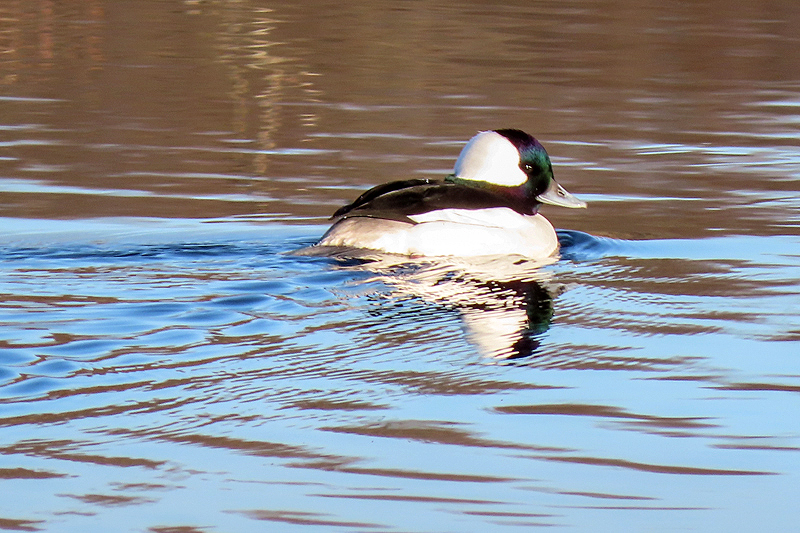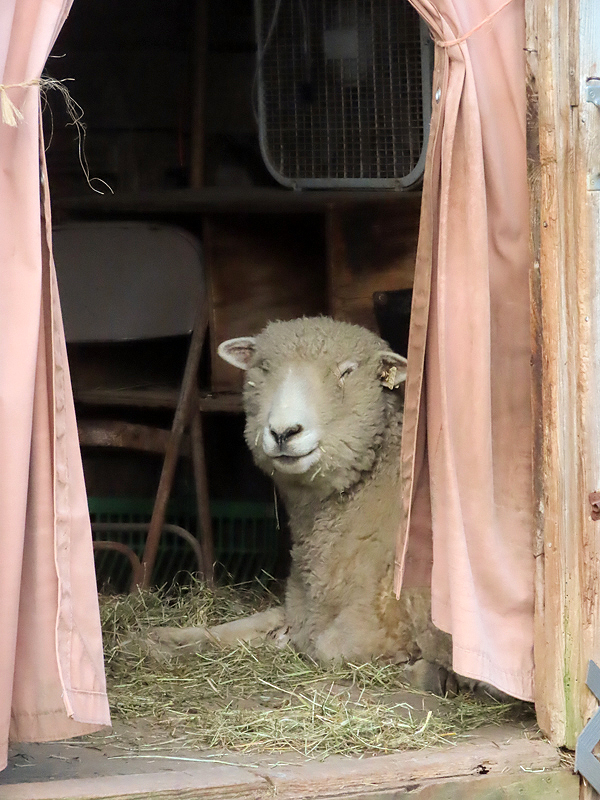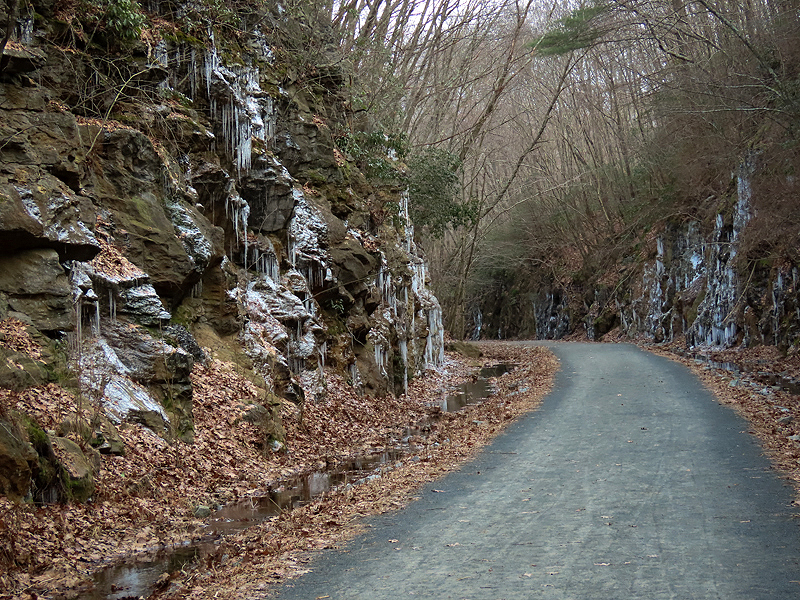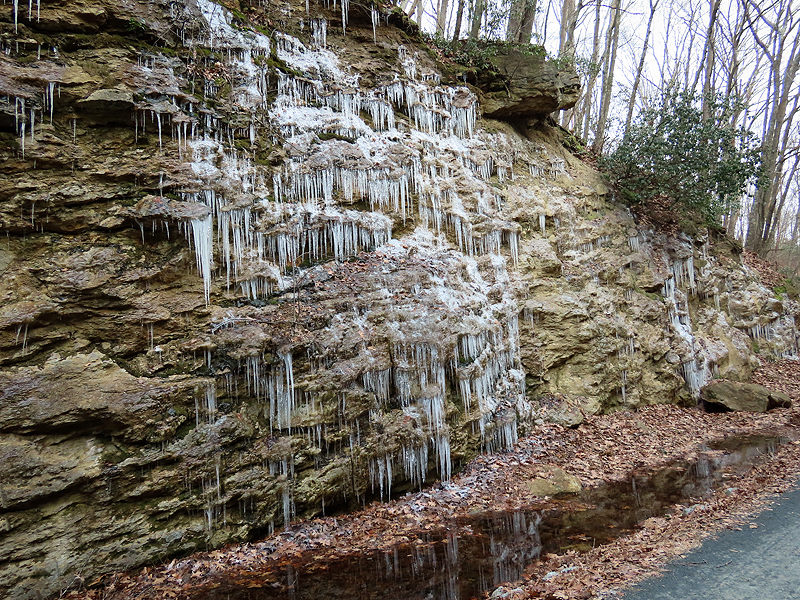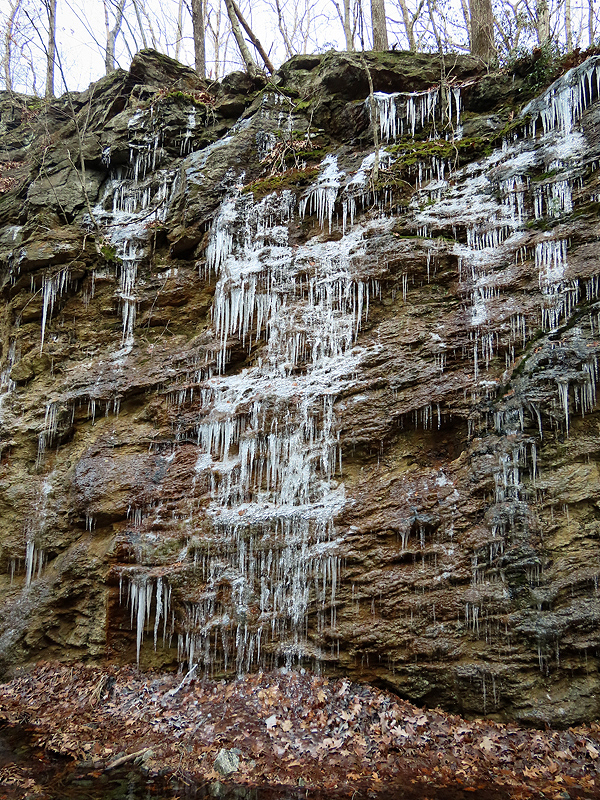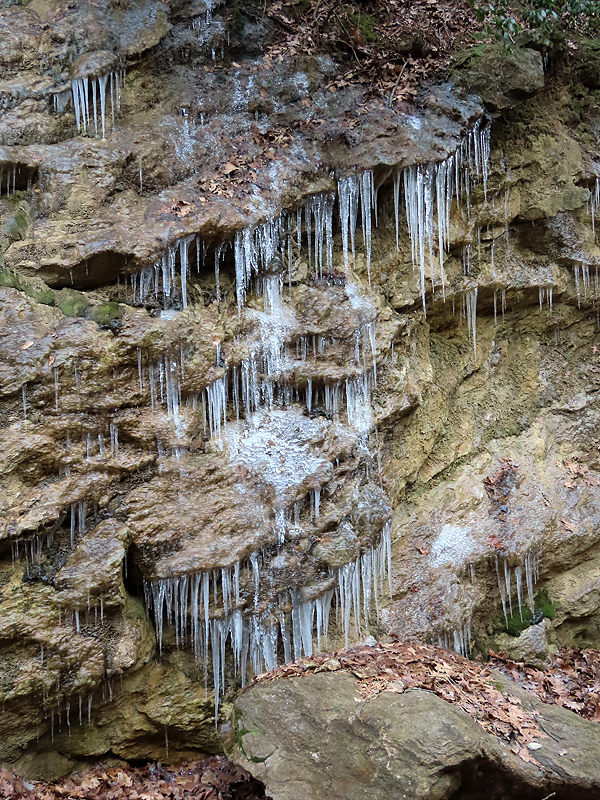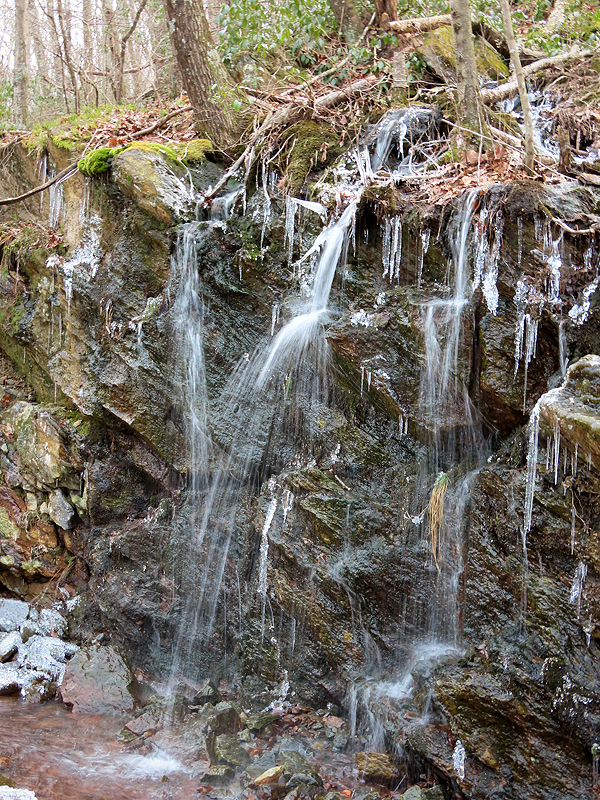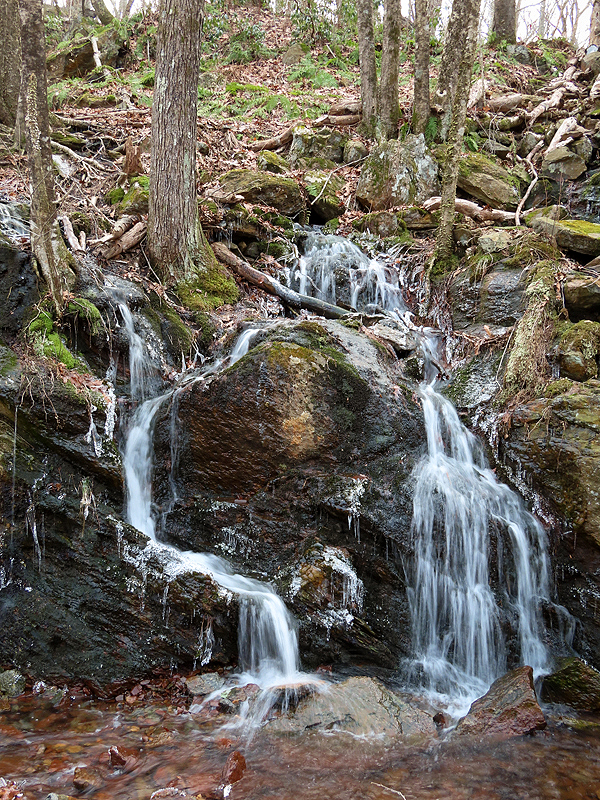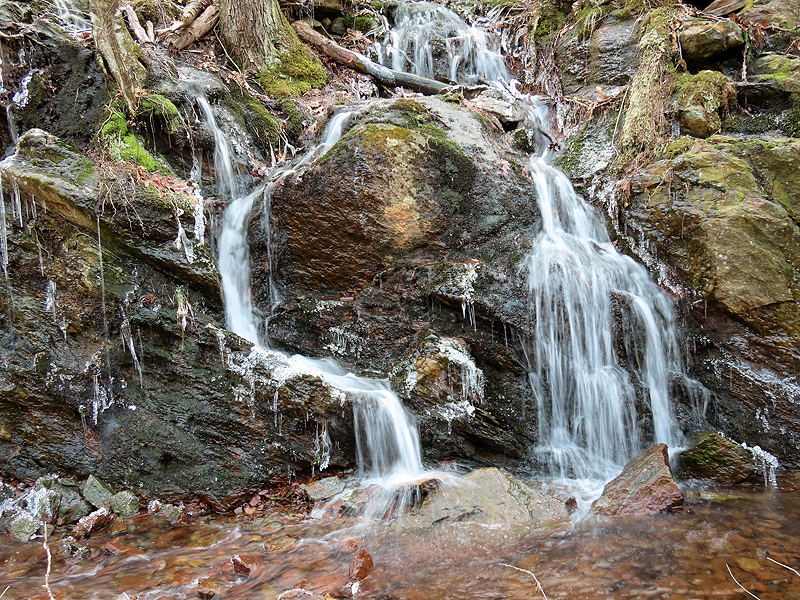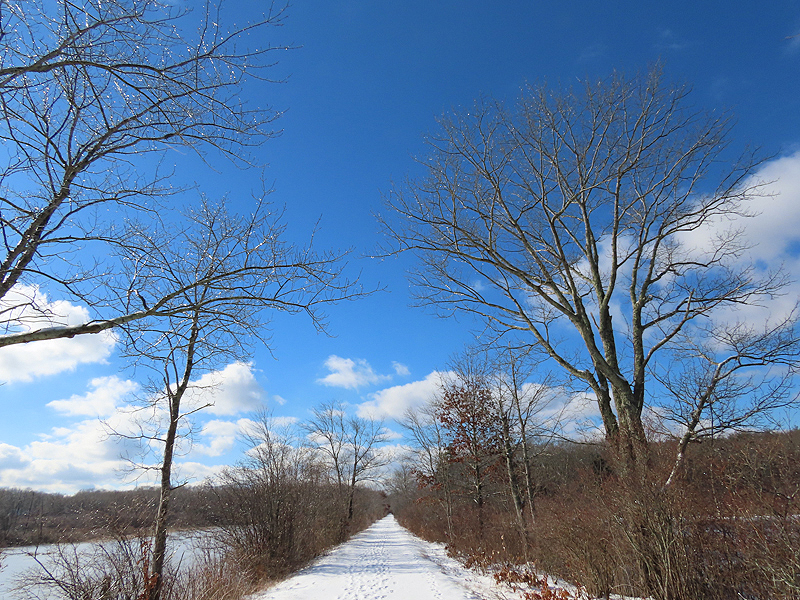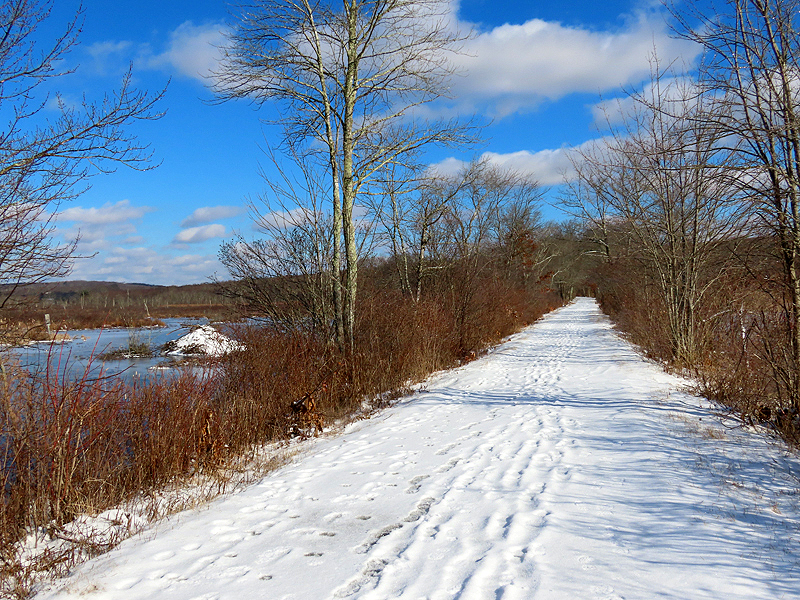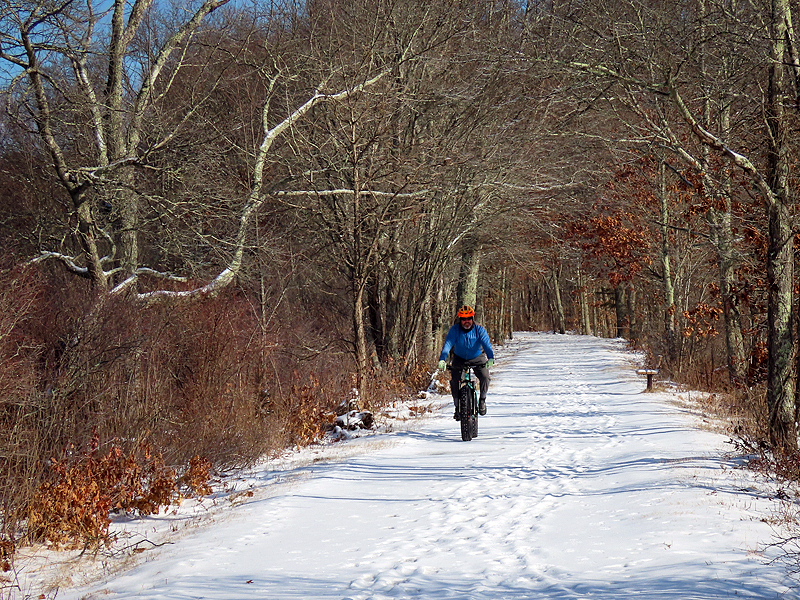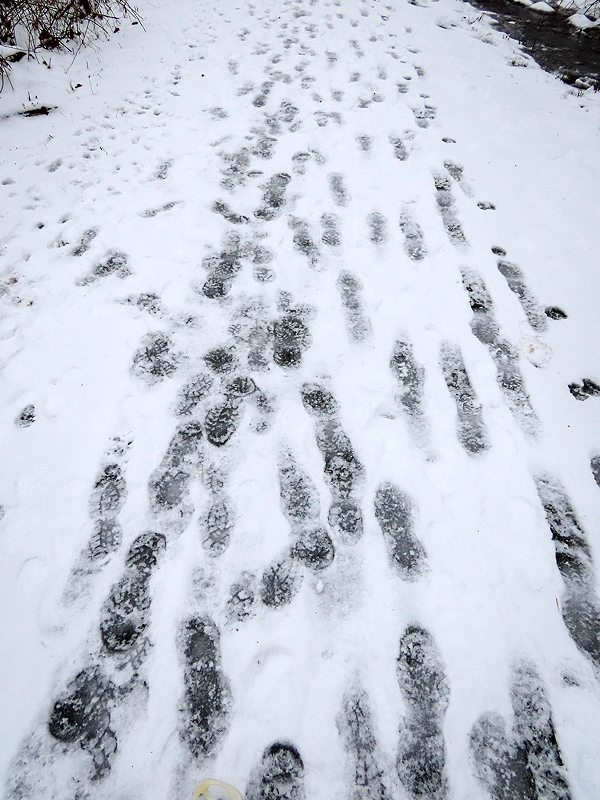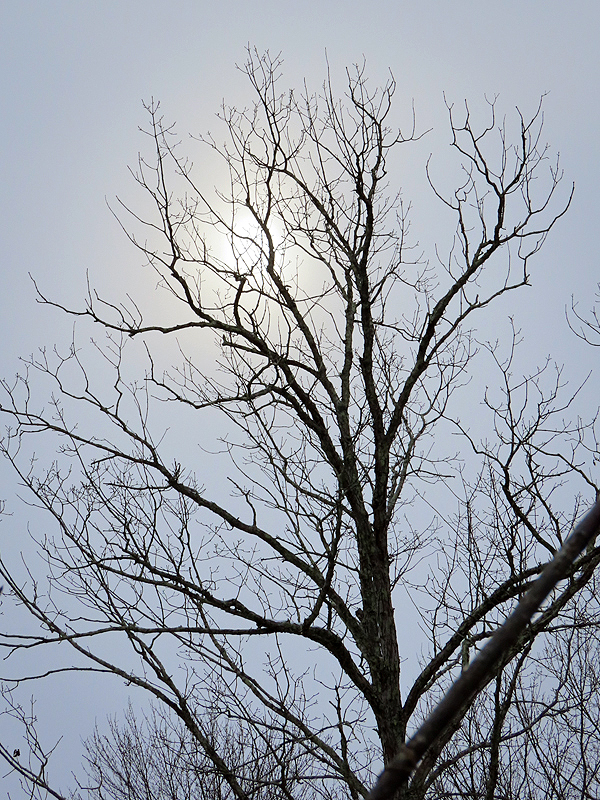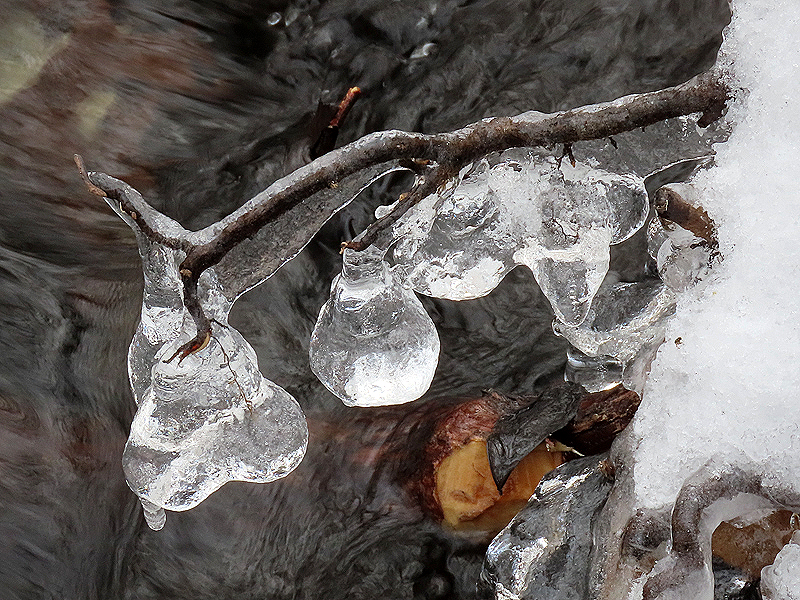Along the Air Line... 2023-2024 - Winter, Part 6 The Air Line Trail in Eastern Connecticut - Stan Malcolm Photos |
HOME: Air Line... 2024 Pages Menu Stan's FlickR Albums |
January 12th. The male Bufflehead (Bucephala albeola) with the damaged left leg was back. |
|
|
|
The metallic green and maroon on the head really show up in this and the next couple of photos. |
|
|
|
January 14th. Chilly, but mostly open water... |
...except in shaded, still areas where fresh ice was forming. |
|
|
The male Bufflehead (Bucephala albeola) with plenty of open water to explore. |
|
January 15th. Seventeen degrees. Ice in ruts on the trail. |
|
|
Over 80 Canada Geese (Branta canadensis) on thin ice or in the chilly water. |
Stretching, grooming, and calling; preparing for flight. |
|
Calling would happen in bursts of one to a few birds, then peter out. Meaning? No consensus that all were ready to fly. |
|
After nearly half an hour, by which time my hands were nearly frozen, the calling reached a consensus and the birds took off in two large waves. |
|
|
|
|
|
|
|
Yup, the male Bufflehead (Bucephala albeola) was still around. |
|
A short afternoon walk east of Cranberry Bog. |
|
I wanted to check the icicles in the rock cut. |
|
|
|
|
|
|
|
|
|
|
January 17th. Seventeen degrees after snow, rain, and freezing rain yesterday. Made for a decent crusty surface. Trees and shrubs coated with ice. |
|
|
|
January 19th. The third day after snow, rain, more snow, and bitter cold, the trail was still crusty walkable. |
The sun made a feeble attempt to shine. |
|
Yesterday, I noticed these tracks on the surface. Determined that they were made by Canada Geese (Branta canadensis) in the hours before the surface completely froze. |
If the marsh remains frozen, I doubt we'll see geese for awhile. |
|
Vapor over moving water coating nearby branches. |
|
Ground Pine or Tree Clubmoss (Lycopodium obscurum). |
